Houston says Olé to new Spanish exhibition from Hispanic Society
On March 1, the Museum of Fine Arts, Houston opens a blockbuster traveling exhibition focusing exclusively on a comprehensive selection of Spanish artworks from the New York-based Hispanic Society of America.
The Glory of Spain: Treasures from the Hispanic Society Museum & Library exhibition marks the first time the unparalleled collection of some 200 artworks–spanning more than 4,000 years of Spanish history–will be on display.
The landmark exhibition is made up of paintings by Spanish masters such as Diego Velázquez, Francisco de Zurbarán, Bartolomé Esteban Murillo, and Jusepe de Ribera. Additionally, the exhibition includes drawings, sculpture, manuscripts, maps, textiles, porcelain, metal works, and jewelry.
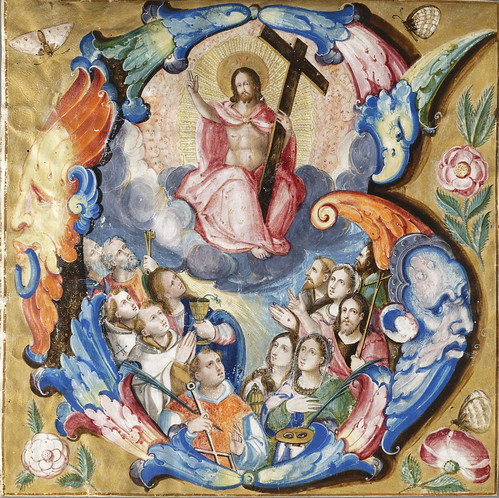
Luis Lagarto de la Vega, Illuminated Capital G from a Choir Book, c. 1600, illumination on parchment, the Hispanic Society of America.
“The museum is delighted to showcase these important works from the Hispanic Society Museum & Library to our audiences in Houston,” said Gary Tinterow, museum director and Margaret Alkek Williams Chair. “We are grateful to our partners at the Society for lending us this show.”

Manises, Plate, c. 1500–1515, tin-glazed earthenware with cobalt and luster, the Hispanic Society of America.

Seville, Plate, c. 1500, earthenware with cuerda seca decoration, the Hispanic Society of America.
The Hispanic Society of America was founded in 1904 by Archer Milton Huntington, one of America’s greatest philanthropists, as a free public museum and research library. His goal was to advance the study and research of Spain’s profound influence in the arts, literature, language, and culture on its vast empire.

Fray Alonso López de Herrera, O.P., Virgin of the Immaculate Conception, 1640, oil on copper, the Hispanic Society of America.
The Glory of Spain exhibition, which closes on May 25, is divided into six sections: Antiquity in Spain, Medieval Spain, Golden Age Spain, Viceregal and 19th Century Latin America, Enlightenment in Spain, and Modern Spain.
During the 16th and 17th century, Spain was a world power, dominating much of North and South America, Asia, and Oceania. Many countries and territories, including Portugal, Latin America, and the Philippines reflect Spanish influences in their exhibit artifacts as late as the 20th century.

Diego Velázquez, Portrait of a Little Girl, c. 1638–42, oil on canvas, the Hispanic Society of America.
Antiquity in Spain, the first section of the exhibition, illustrates the ancient, complex history of the Iberian Peninsula. The Society’s antiquities collection-the largest outside of Spain-highlights metal works such as silver bracelets, torques, and fibula from the Celtiberian culture (150-72BC).

Celtiberian, Silver and Gold Torque, c. 172–150 BC, silver and gold, the Hispanic Society of America.
In the 3rd century BC, the Romans conquered Spain, eventually dominating the entire Iberian Peninsula up to the 5th century AD or 500 years! Marble, small bronze sculptures, silver, mosaic, glass, and ceramics are additional antiquities to be displayed.
The Medieval Spain section provides a glimpse into Spain’s metamorphosis with the decline of the Roman Empire. This is a time when the Vandals, Sueves ,and Visigoths occupied the region. In the 5th century, however, the Visigoths triumphed over the other groups and established their capital in Toledo.

Toledo, Plate with Jonah and the Whale, c. 1600, tin-glazed earthenware, the Hispanic Society of America.
A Germanic people, the Visigoths were eventually Christianized. Although the Visigoths only ruled for two centuries, they contributed metal artworks such as jewelry, buckles, and stone reliefs on display in this section.
The Visigoths were displaced in 711 by nomadic North African Berber Muslims, who contributed their own artworks in what became Islamic Spain. The Muslim dominance lasted until 1492 when Catholic monarchs, Queen Isabella of Castile and King Ferdinand of Aragón, ousted them from the Iberian Peninsula.

Spanish, Door Knocker with Crab Claws, c. 1500, iron and plate, the Hispanic Society of America.

Spain and Portugal, Hebrew Bible, after 1450– 97, illuminated manuscript on vellum, the Hispanic Society of America.

El Greco (Doménikos Theotokópoulos), Pietà, c. 1574–76, oil on canvas, the Hispanic Society of America.

El Greco (Doménikos Theotokópoulos), Portrait Miniature of a Man, c. 1586–90, oil on cardboard, the Hispanic Society of America.
The largest section of the exhibition is devoted to Spain’s Golden Age. Visitors will learn that from the mid-16th century to the late 17th century Spanish art flourished. The Golden Age, spanning 150 years, saw Spain’s vast empire extend to the New World.

Spanish, Dalmatic, 15th–16th century, gold and red silk velvet brocade, applied embroidered panels with metallic threads, polychrome silk, and applied pearls, the Hispanic Society of America.

Bartolomé Esteban Murillo, The Prodigal Son among the Swine, 1656–65, oil on canvas, the Hispanic Society of America.
This is the time period when Velázquez, Zurbarán, Murillo, and Ribera painted their world-famous works, thanks to the patronage of the Spanish Habsburg Dynasty. Now, the MFAH is the sole U.S. venue for Velázquez’s late masterpiece Camillo Astalli, famed Cardinal Pamphili (1650-51) on exclusive loan to the museum.

Anonymous Ecuadorian Sculptor, Saint Michael Archangel, c. 1700–1750, polychromed and gilded wood, the Hispanic Society of America.
Viceregal and 19th century Latin America illustrates the influence of Spanish artists who immigrated to Latin America following the Spanish colonization of vast new territories and colonies christened “New Spain” in 1521.
During this period, between the 17th and 19th century, one of the most exceptional artists was Alonso Vásquez. He arrived in Mexico in 1603 as Viceroy Juan de Mendoza y Luna´s official painter. In the fourth section visitors can see his earliest painting, Saint Sebastian.
Another highlight is the 1778 map of Mexico City, created by architect and surveyor, Ignacio Castera. The Plano ignografico de la nobliissima ciudad de México was the most accurate map produced of the viceregal capital at the time. A 19th century painting, El Costeño, (Young Man from the Coast) is also featured.
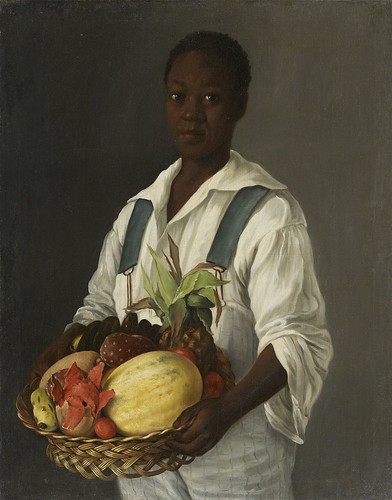
José Agustín Arrieta, El Costeño (The Young Man from the Coast), c. 1843, oil on canvas, the Hispanic Society of America.
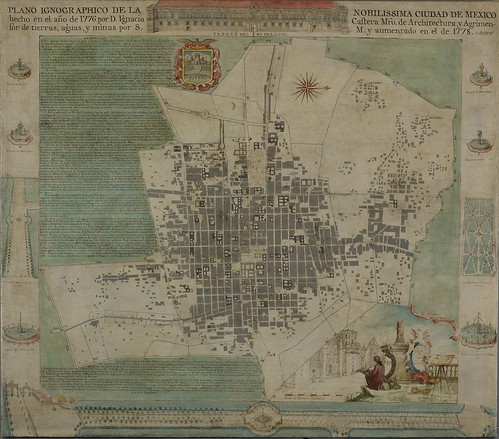
Ignacio Castera, cartographer; Anselmo López, artist, Plano ignográfico de la nobilissima ciudad de México (Ichnographic Plan of the Most Noble City of Mexico), 1778, oil on canvas, the Hispanic Society of America.
Enlightenment in Spain, the 18th and late 19th century when Spain’s artists traveled and trained abroad in Paris and Rome, resulted in artworks highly influenced by major art movements of the period. Some of the movements included Neoclassicism, Romanticism, Realism, and Impressionism.
The Society’s most celebrated 1797 portrait by Francisco de Goya y Lucientes, also to be on display, is The Duchess of Alba, Maria del Pilar Teresa Cayetana de Silva Álvarez de Toledo. It is one of two major paintings Goya painted of the duchess.

Goya (Francisco de Goya y Lucientes), The Duchess of Alba, 1797, oil on canvas, the Hispanic Society of America.
Modern Spain, the sixth and final section of the exhibition, establishes a context for the paintings of later, modern artists through Goya´s paintings, drawings and most of his engravings. The “Modern Artists” represented here include Joaquin de Sorolla y Bastida, Federico de Madrazo y Kuntz, Eugenio Lucas Velázquez, and Ignacio Zuloaga.

Joaquín Sorolla y Bastida, After the Bath, 1908, oil on canvas, the Hispanic Society of America.
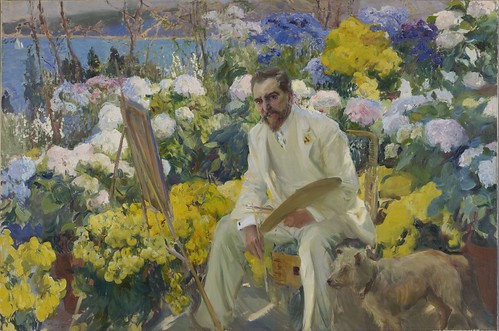
Joaquín Sorolla y Bastida, Louis Comfort Tiffany, 1911, oil on canvas, the Hispanic Society of America.
In 2012, The Hispanic Society of America was designated a National Historic Landmark in recognition of its fundamental role in promotion of Hispanic culture, art, and literature for more than a century. The HSA complex, encompassing the Museum and Library, is situated in the historic Audubon Terrace Historic District (Washington Heights neighborhood) of New York City.
The MFAH’s James Anno, Associate Curator for European Art, is the curator for the Houston exhibition. Among the 10 largest in the United States, the MFAH was established in 1900 with an encyclopedic collection of nearly 70,000 works dating from antiquity to the present.
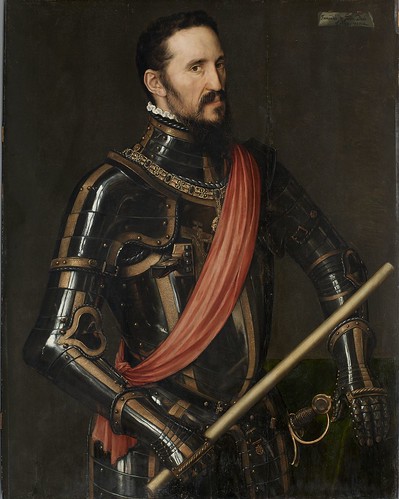
Antonio Moro (Anthonis Mor van Dashorst), Portrait of the Duke of Alba, 1549, oil on wood, the Hispanic Society of America.
A repertory cinema, two libraries, and public archives are just some of the departments housed in the MFAH campus complex. The International Center for the Arts of the Americas research institute for 20th century Latin American art is also part of the museum.

Colombian, Portable Writing Desk, c. 1684, barniz lacquer on wood, the Hispanic Society of America.
For more information on the museum or the Glory of Spain exhibition, go to www.mfah.org
Rosie Carbo is the Lifestyles Editor for Wandering Educators, and is a former newspaper reporter whose work has appeared in newspapers and magazines nationwide. Some of those publications include People magazine, The Dallas Morning News, The Houston Chronicle, and San Antonio Express-News. Some of her features were redistributed by The Associated Press early in her career as an award-winning Texas journalist.
All photos used with permission.



















